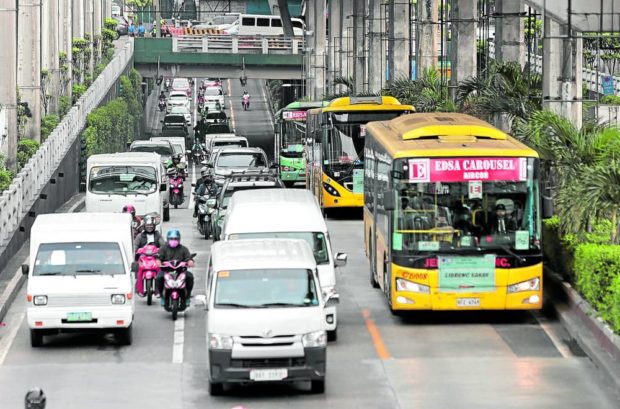The Management Association of the Philippines (MAP) on Monday called for the privatization of Edsa busway and bus service to help address the perennial gridlock, urging the government to also upgrade the public mass transport system.
The business group submitted a recommendation to the Department of Transportation (DOTr) to privatize the carousel network under an operate and maintenance concession, wherein the government would provide the infrastructure and improvements, while a private concessionaire would operate and maintain the facilities.
“MAP has offered to work with the DOTr and other private sector stakeholders in preparing the terms of reference for the bidding and award of the concessions to ensure a level playing field for all,” the group said.MAP also suggested increasing the capacity of station platforms to accommodate more commuters and enable simultaneous docking of buses.
It also recommended building more stations, expediting the construction of footbridges, resolving choke points, providing ease of bus-to-train connectivity, and providing bus exchange stations for trunk-to-feeder line transfer.
Decongestion of the Ayala stations and McKinley Road through an alternate route from Bonifacio Global City to Buendia stations, as well as the introduction of a modern, high-capacity, bi-articulated electric commuter buses were also sought.
“The upgrade will complete the EDSA busway, a work in progress, scale up its capacity and raise it to the level of global standards to optimize the system to achieve its full potential as a cost-effective, efficient, high-capacity urban mass public transport system commensurate to the high-commuter density of EDSA,” MAP said. But the National Center for Commuter Safety and Protection is concerned on how the privatization would affect bus fares and to which companies the contract would go to. At present, the system is seen challenging for commuters.
“Persons with disabilities, senior citizens do not have easy access to it. They find difficulties in climbing up the footbridges,” Elvira Medina, chair of the advocacy group, said in a message sent to the Inquirer, saying that this was against commuter welfare. Medina added that commuters would need to walk great distances, wait more than an hour to ride, and are put in peril when boarding.
“We are obliged to walk in front of the buses since the footbridge exits are on the left and the doors of the buses are on the right. This is against the international advisory never to cross in front of a vehicle [because of] the danger of not being seen by on-coming vehicles.”
